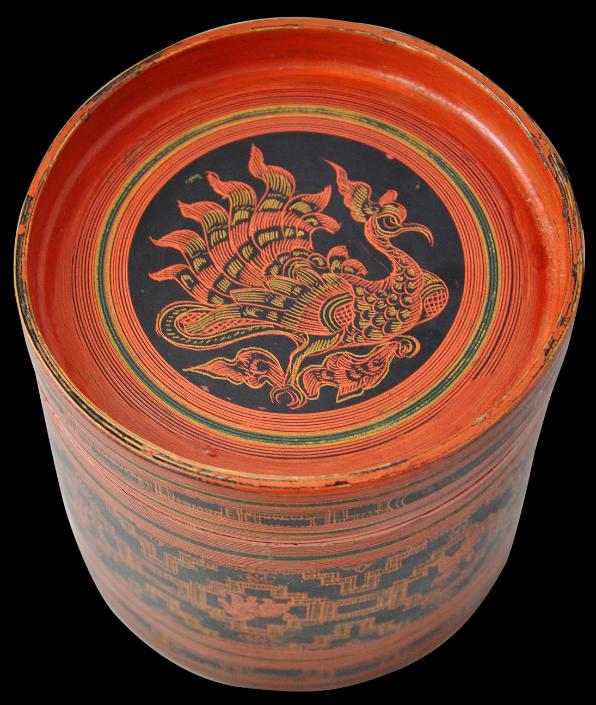
Burmese Lacquer Betel Box
Lacquered Betel Box
Pagan, Burma
late 19th century
height: 12.5cm, diameter: 12.8cm
This finely decorated betel box is lacquered in orange-red, green, yellow and black hues. The sides are decorated with the repeated, inter-locking geometric myin-mo pattern, based on the mythical Buddhist Mount Meru, with the central cartouches of the pattern in-filled with animals representing the eight planets (gyo-shit-myo). The top of the cover is similarly decorated.
It is also decorated with four cartouches of Burmese script. These translate in turn as ‘Product of First Lacquer Master Han’; ‘Wishing you wealth!’; ‘Pagan town, Glass Smelters Ward’; and ‘Wishing you health!’. So the maker is identified as a man called Han, who operated from the Glass Smelters’ Ward of Pagan.
The box is in fine condition. There are minor losses to the edges here and there but overall, the age is obvious.
The box retains its original, two fitted internal trays.
The underside of the base is decorated with a bird motif.
Betel chewing is a habit that unites Southeast Asia with the Indian sub-continent, parts of southern China and the Western Pacific. Whereas alcohol was associated with feasting, betel was the everyday social lubricant: it was offered to visitors to one’s home. And just as the English developed elaborate tea sets, Indians and Southeast Asians developed elaborate betel nut sets. Betel took on symbolic meaning too and was a central element of traditional marriage ceremonies.
The actual nut comes from the areca palm tree. Typically, it is sliced, mixed with lime (usually obtained from crushed seashells) and then wrapped up in a betel creeper leaf and chewed. The lime reacts with compounds in the nut to produce alkaloids which give a mild narcotic effect. Large amounts of red saliva are also produced which chewers spit out.
In Burma, betel sets were stored and carried in elaborate lacquered boxes such as this example.
This example was obtained in the UK and most probably has been in the UK since colonial times, thus accounting for its relatively fine condition.
References
Fraser-Lu, S., Burmese Crafts: Past and Present, Oxford University Press, 1994.
Fraser-Lu, S.,
Burmese Lacquerware, White Orchid Books, 2000.
Isaacs, R., & T.R. Blurton,
Burma and the Art of Lacquer, River Books, 2000.
pers. coms. with Mr Ralph Issacs.
Lowry, J.,
Burmese Art, Victoria and Albert Museum, 1974.
Provenance
UK art market
Inventory no.: 1652
SOLD

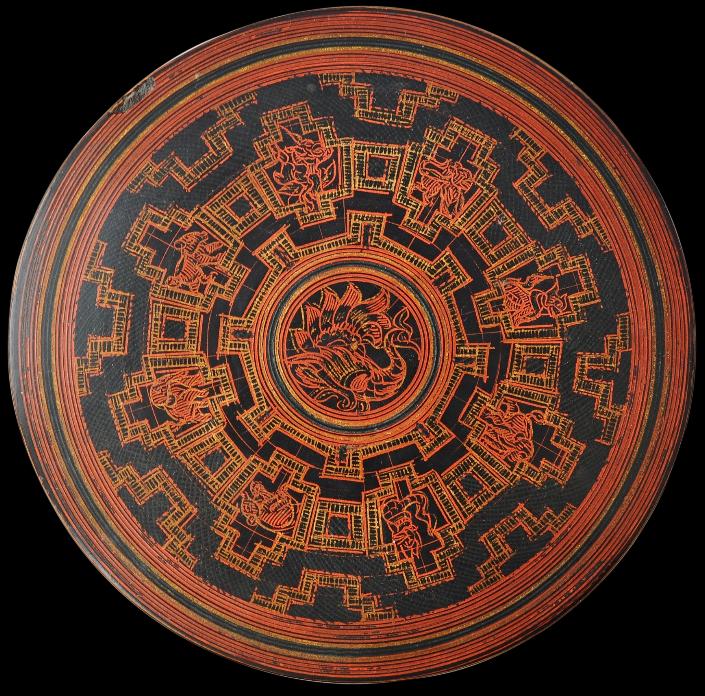
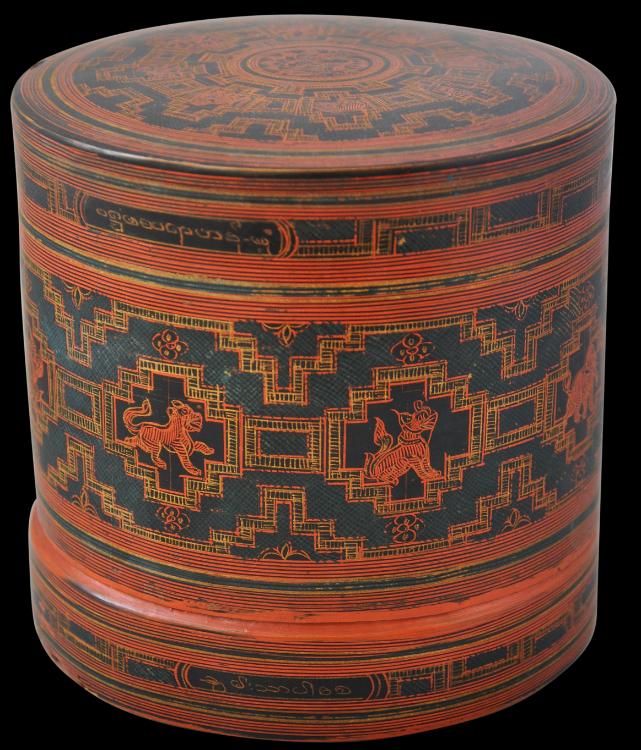
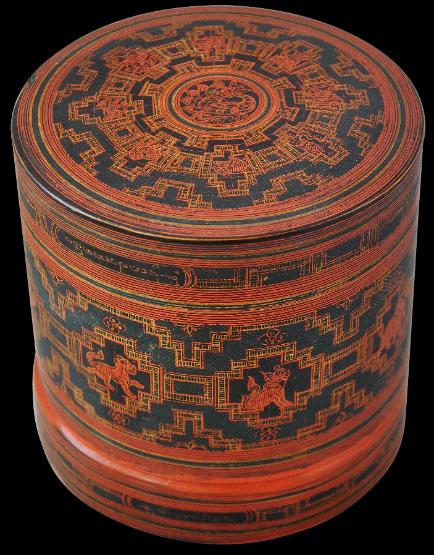
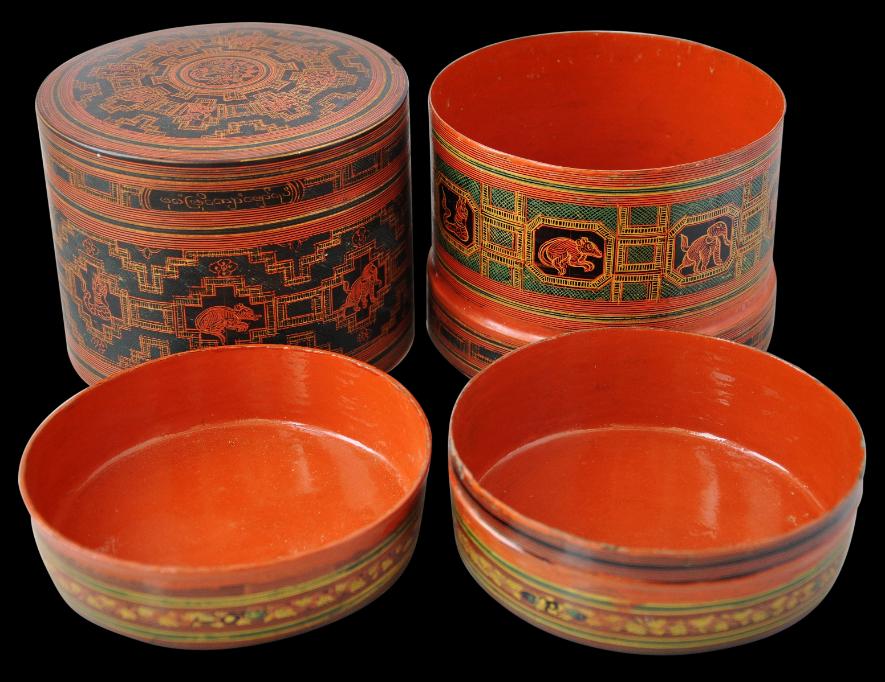
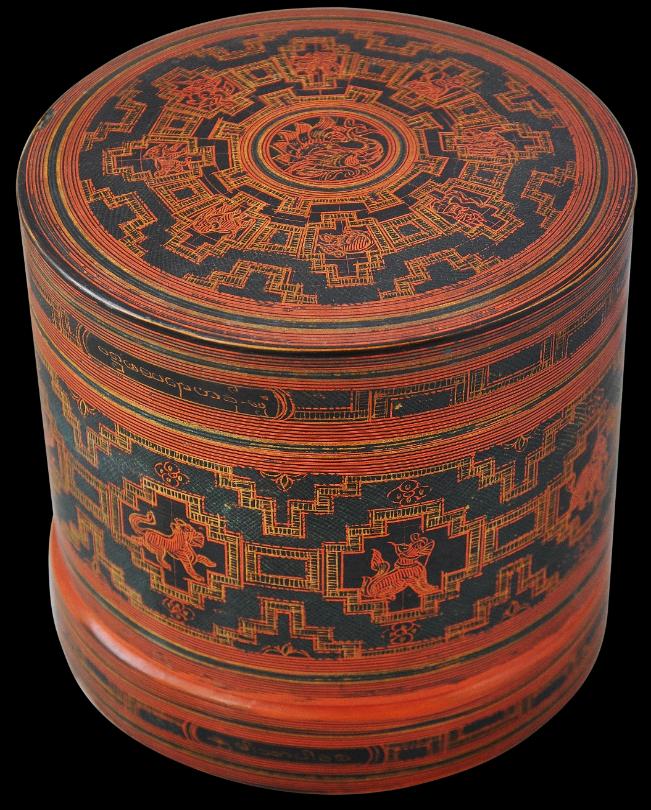
The underside of the base.
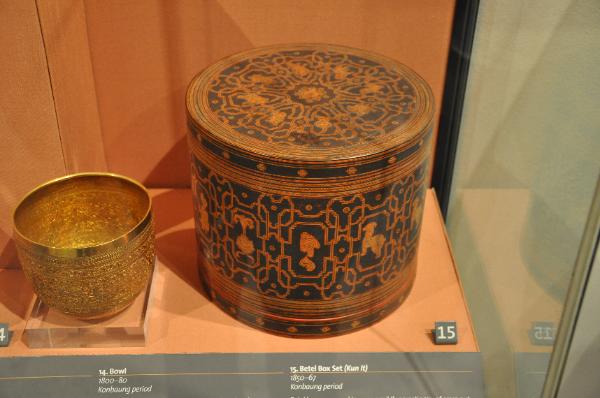
A related example on display in London’s Victoria & Albert Museum.

